People
‘We Can Move Mountains With Very Few Resources’: The Drawing Center’s New Director Laura Hoptman on the Big Potential of a Small Museum
Like the Drawing Center's founder, Hoptman worked in the drawing department at MoMA.
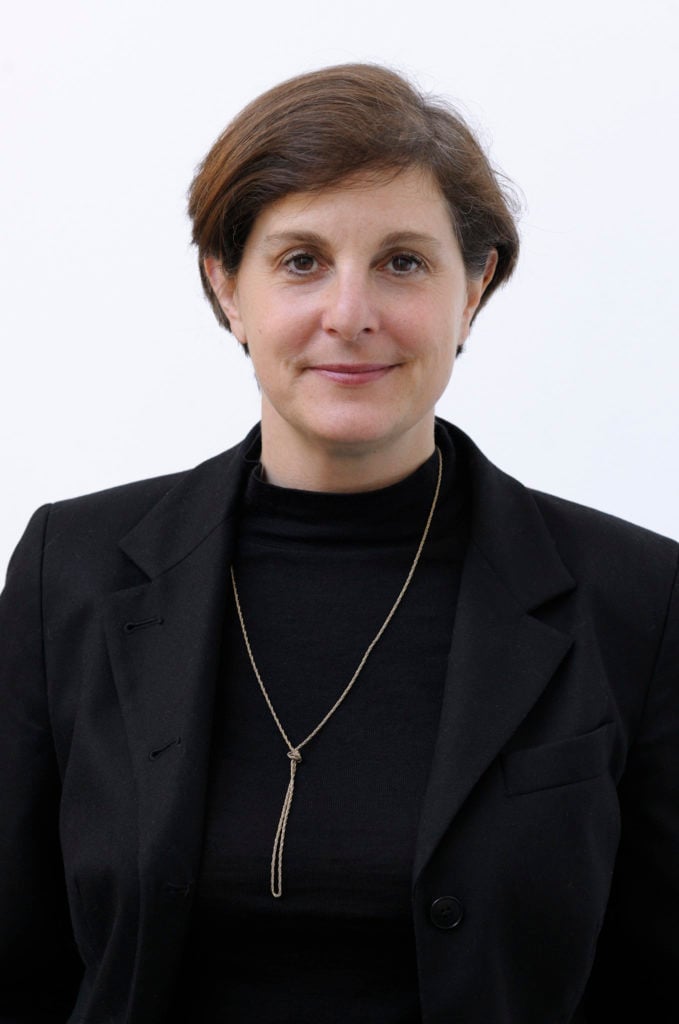
Like the Drawing Center's founder, Hoptman worked in the drawing department at MoMA.

Sarah Cascone

Right before Laura Hoptman, the curator of painting and sculpture at New York’s Museum of Modern Art, was named director of SoHo’s Drawing Center, she had an amusing phone call with her colleague Klaus Biesenbach, the director of MoMA PS1 in Queens. Just hours after her appointment was made public, it was announced that he, too, would be taking on a new challenge as director of the Museum of Contemporary Art, Los Angeles.
“Klaus and I were both astonished,” Hoptman, laughing, admitted to artnet News. “I called him and told him I had something to say, and he said he had something to say!” The departure of the two longtime MoMA curators comes at a time when the upper ranks of museum leadership is reshuffling across the US—and these changes could result in a significant shift in the kind of art you see in New York and elsewhere.
After beginning her career at the Bronx Museum of the Arts in the 1980s, Hoptman worked at various institutions, including Pittsburgh’s Carnegie Museum of Art, where she served as director of the 54th Carnegie International in 2005, and the New Museum in New York, where she was a senior curator.
She also served two stints at MoMA, where she memorably organized “Drawing Now: Eight Propositions” (2002–03). “It was a long time ago, but part of the drawing community still knows me for it,” Hoptman noted. At the Drawing Center, Hoptman will succeed Brett Littman, who left after 11 years to lead the Noguchi Museum in Queens.
The Drawing Center’s footprint is considerably smaller than that of MoMA; the former has less than 4,000 square feet of gallery space, while the latter houses 125,000. But for Hoptman, this shift in scale is part of the job’s appeal. Ahead of her first day on September 10, we talked with the curator about returning to her drawing roots, stepping into a director role, and the outsize influence that can come from thinking small.
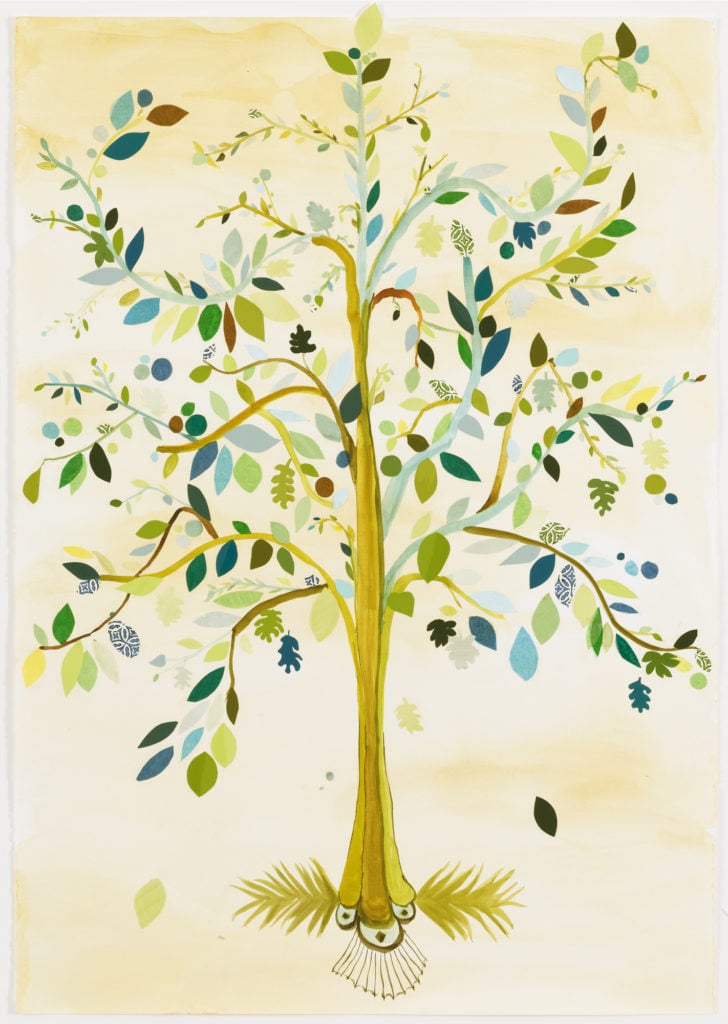
Laura Owens, Untitled (2000), from “Drawing Now: Eight Propositions,” curated by Laura Hoptman at the Museum of Modern Art, New York. Photo courtesy Sadie Coles HQ, London, ©2016 Laura Owens.
A couple of years ago, you told an interviewer that you are “a painting person.” What are your thoughts on drawing, which has historically been considered secondary to painting and sculpture?
I am a painting person, but I’ve also always been a drawing person. My first job at MoMA in the 1990s was in the drawing department. Truthfully, I became best known for being a drawing curator. And if you think about it, if you’re working with painting, of course you’re working with drawing as well. Almost all of the exhibitions I’ve done—from Elizabeth Peyton at the New Museum to the Carnegie International—are heavily drawing-centered.
Over the last eight years at MoMA, my medium has been painting, but that doesn’t mean I forgot drawing. It would be really lame not to know different mediums, because artists don’t make those distinctions.
Pretty much every artist draws. Even dance can be connected to a drawing-based way of thinking—Merce Cunningham knew that, and used a very early computer program for choreography; it was literally line-based.
In a way, anybody who knows about contemporary art could be a drawing curator. With Leonardo and Michelangelo, there’s a lot of connoisseurship that goes into identifying the handwriting of people’s line, but if you’re talking about contemporary art, it’s a whole different thing.
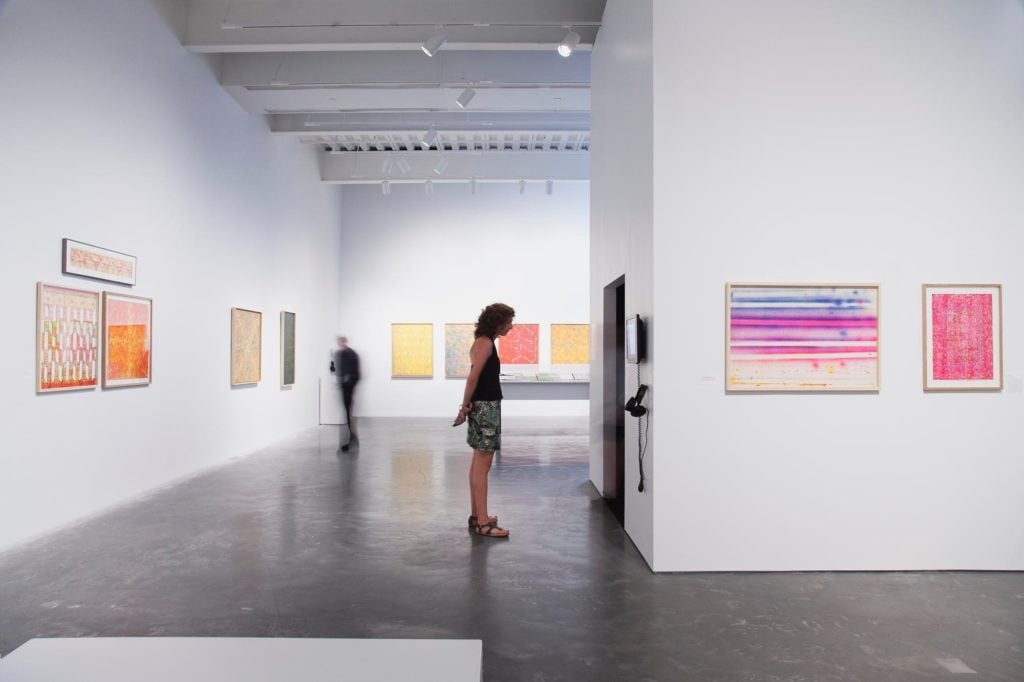
Installation view of “Brion Gysin: Dream Machine” curated by Laura Hoptman at the New Museum. Photo courtesy of the New Museum.
What’s interesting about your roots in the drawing department at MoMA is that it’s also the genesis of the Drawing Center. MoMA curator Martha Beck’s frustration with what she saw as the museum’s failing to take the medium seriously inspired her to found the Drawing Center. Do you like having that career parallel with Martha?
Absolutely! The Drawing Center was founded in 1977, the same time as many not-for-profit art spaces. The New York State Council on the Arts was giving away seed money—not huge amounts, but enough to start these not-for-profits. And yet each one of them has their own character.
Being in SoHo, founded by a drawing curator from MoMA, the Drawing Center has always had a certain amount of gravitas, a museological air. It’s a small room, but it has this perfection of lighting and finish. It’s not meant to be this rough-hewn environment. It’s not about the freedom to mess things up, or to break the rules. It’s a different kind of alternative space.
It’s about expanding the notion of drawing to be anything it wants to be. It’s a place where you can see museum-quality exhibitions that you know would never be in museums. The Drawing Center is meant to be a perfect place to look closely, for a long time, at works of art that merit it.
I’ve been a fan of the Drawing Center since I was a young person. Some of [former Drawing Center director] Ann Philbin’s exhibitions in the 1990s changed the way I looked at art: the Indian drawings, and tattoos, and Victor Hugo’s drawings.
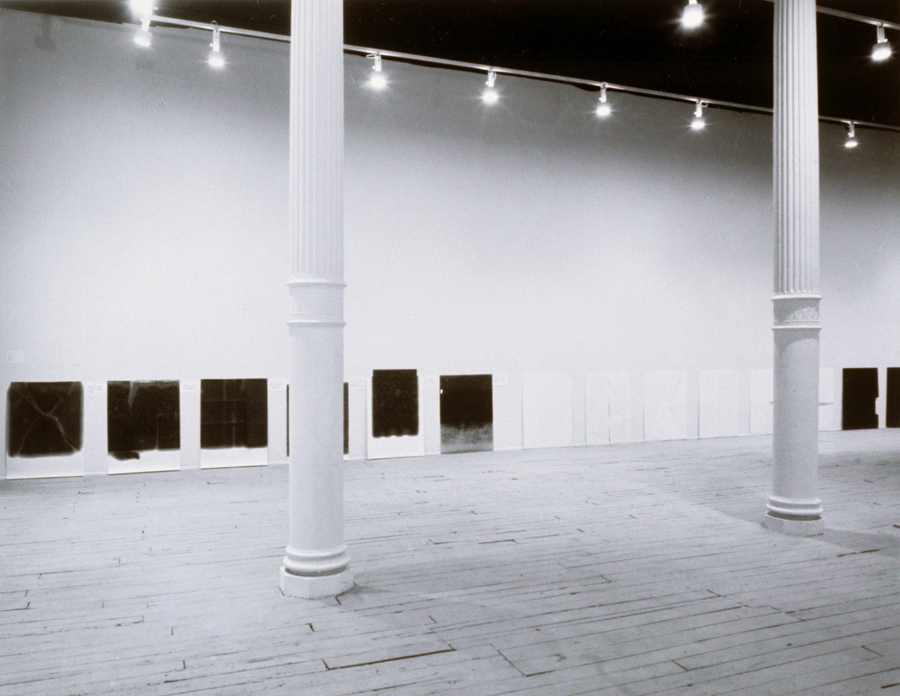
The inaugural exhibition at the Drawing Center, “Paintings on Paper,” featuring
James Bishop, Ralph Humphrey, Robert Mangold, Dorothea Rockburne, Robert Ryman, and Douglas Sanderson. Courtesy of the Drawing Center.
What, in your eyes, sets the Drawing Center apart? And how do you plan to build on its strengths?
The material of drawing is arguably more ephemeral than, say, a sculpture, and it’s certainly cheaper. You’re not part of the market in the same way. But the Drawing Center makes exhibitions for posterity. There are only two major exhibitions a year, so you can take your time to go to an exhibition and see it more than once. It’s not about that quick churn.
The Drawing Center is a place that is able to go deep as opposed to broad. It’s not a place where you get your training wheels to go to the New Museum or MoMA. But despite the vast difference between a massive organization like MoMA and a small nonprofit like the Drawing Center, they share a deep connectivity that has to do with the history of art and the way that exhibitions are researched and created.
When I mention the Drawing Center, people always say, ‘Oh yes, a hidden gem.’ It’s something that the art world knows about. My goal is to open it up to a broader community, so that more people can see these small, deep, contemplative exhibitions that have been chosen because they need to be seen, because of their urgency—which could be because of the political moment, or simply because they’re awesome and no one’s ever seen them before. I’m looking forward to working with the great team of curators and administrators who are already there to create programming that is meaningful, not for its size or spectacle, but almost despite it.
The Drawing Center is an institution that can and does have a strong voice in the conversation, not just locally but nationally and internationally—not because of how big it is, or how rich is, or because of whoever is attached to it, or superstar artists, but for all the right reasons. Because of the art, which is vital to what we do and think and care about; our politics and morals.

The Drawing Center, located at 35 Wooster Street in Soho. Photo courtesy of the Drawing Center, New York.
How do you feel about transitioning from such a major institution like the MoMA to the much-smaller Drawing Center?
I’ve spent most of my career at fairly large institutions, and almost my entire career in New York. After the 2016 election, I felt the impulse to get closer to my community. I wasn’t born in New York, but I’ve lived here 38 years. So I thought, where do I think I can make more of a difference than I can at a huge institution with almost 100 curators and a huge budget?
MoMA and museums of that sort are very big worlds—and they’re fantastic worlds. But the future that I want to be part of, in terms of the cultural conversation, is at a smaller level; one that doesn’t privilege growth over depth.
What could be a better place for that than a small institution whose parameters are medium-specific? Especially when the parameter is drawing, which I love and grew up with, and is a very flexible parameter. A little organization with a little bit of money and the zeal to display art with clarity and respect—these places can really do a lot.
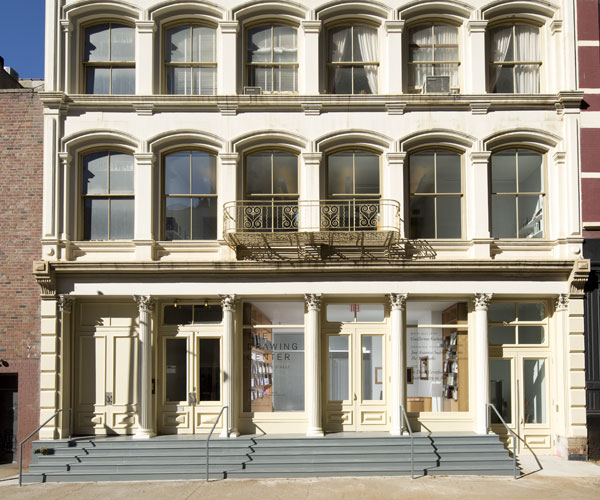
The Drawing Center, located at 35 Wooster Street in Soho. Photo courtesy of the Drawing Center, New York.
Under Brett Littman’s leadership, the Drawing Center flirted with, and ultimately opted against, expanding. Is there pressure for small institutions to expand their scope and footprint? Is that something that might someday be back on the table?
The Drawing Center was thinking of moving at a moment when expansion seemed to be the right thing to explore. But now I think we can appreciate our incredibly beautiful physical space that we own in the center of the city. It’s very easy to get to in an art world that stretches from the Bronx to the far reaches of Queens—or even Long island.
The city is rife with places where people can have wonderful artistic experiences. We’re not huddled in one or two neighborhoods anymore. The urgency to move to a different neighborhood isn’t there, and certainly the urgency for more space isn’t there. I look at our small space as one of our greatest strengths. It gives us freedom.
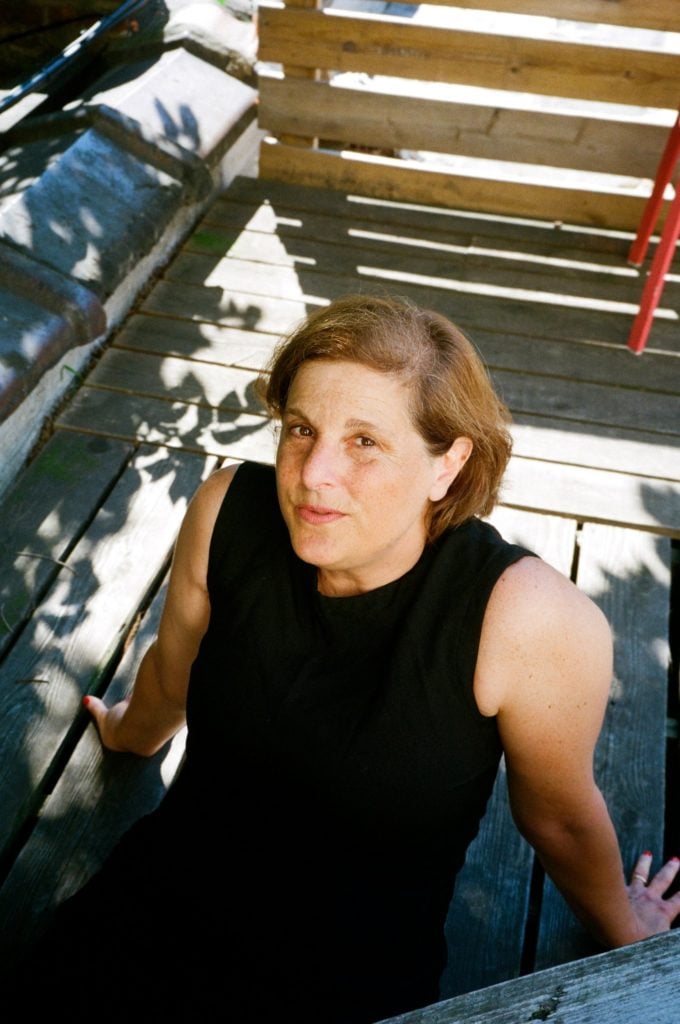
Laura Hoptman. Photo by Nick Relph.
Some people might expect the opposite.
At a really large museum, there are pressures on your choices of intellectual pursuits. I don’t mean financially, I mean ideologically. I’m talking about the pressure to create an art history, or to modify, subvert, or build up an art history that has already been made. These are very major issues.
The Drawing Center, because it is small, doesn’t have the heavy burden of being either canonical or completely anti-canonical. You have the world to look at through the lens of drawing, and it’s the most freeing feeling. If we get it right, we can move mountains with very few resources: just our will and intelligence, and of course great art and artists.
Who are some artists not known for their drawings for whom the time might be right to showcase that side of their practice?
I couldn’t name just one. When I started to think about it, I came up with a list of 50. There are no barriers. There’s material culture, there’s pop culture. You can go into illustration. There are science drawings. There was an incredible exhibition at NYU’s Grey Art Gallery of [Spanish neuroscientist] Santiago Ramón y Cajal’s drawings. Mind-blowing work by a brain scientist. All it took was one person to realize, “The art world needs to see this!”
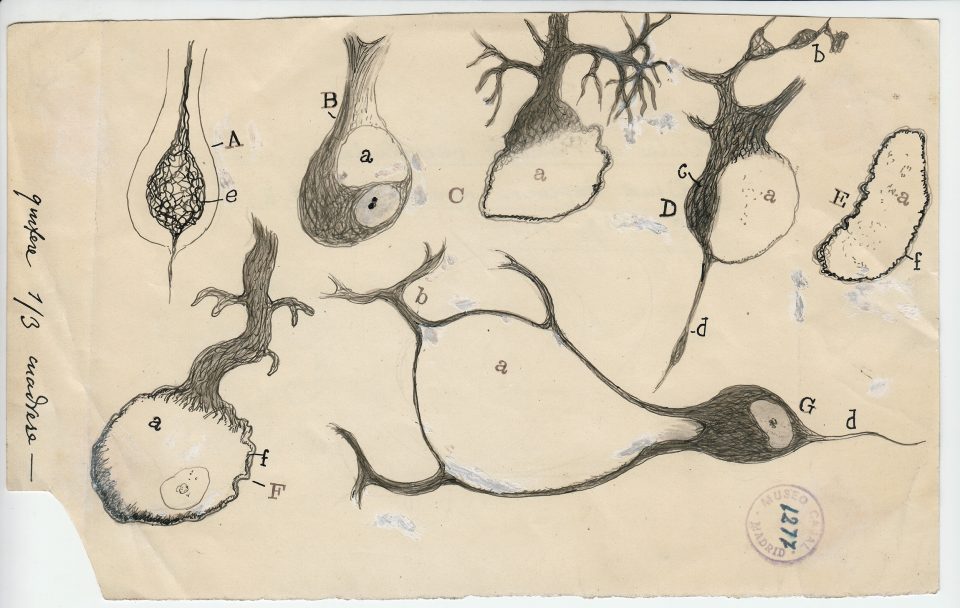
Santiago Ramón y Cajal, Injured Purkinje neurons of the cerebellum (1914). Courtesy of the Cajal Institute (CSIC), Madrid.
My colleague, Julia Halperin, wrote some years ago that you’d developed a reputation as something of a “picker,” able to identify artists on the cusp of major recognition. Similarly, the Drawing Center was the first institution to show William Kentridge, and, famously, Kara Walker. Do you feel any pressure to continue that track record?
None! It’s great when institutions introduce wonderful artists for the first time. But it doesn’t have to be a young artist or a new artist, it can also be new information. The landscape has changed over the course of my career. The drawing exhibition that I did at MoMA right before I left for the Carnegie was known as this exhibition that had up-and-coming art stars at a young age: Elizabeth Petyon, John Currin, Julie Mehretu…
It’s just different now. I remember the time when finding the next big thing, sniffing it out, was fun. It certainly brought fans, but I don’t think it works anymore. If artnet does a feature proclaiming an artist the next big thing, that might be true for a few thousand people, but it’s not the next big thing for others who are on a different wavelength. There’s lots of different communities. It’s like how there’s books being written about how there’s no such thing as a hit on the radio anymore.
It’s true, the internet is allowing a lot of different types of content to build up small, fervent followings. There’s such wide dissemination of content that it’s less likely that everyone is going to be interested in the same thing because there’s probably something else out there to appeal to their specific taste.
Exactly. It’s not like Picasso. I don’t know who would be our Picasso now.
I think to have one world famous artist wasn’t really possible before Picasso, and it isn’t really possible now.
That’s probably a good thing. Think of how small the notion of taste and culture would be to have one world-dominating artist who everybody loves.
This interview has been edited and condensed.